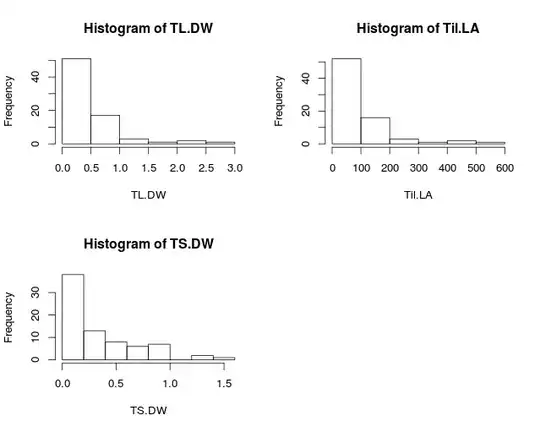Possible Duplicate:
How should I transform non-negative data including zeros?
I want to log-transform some of my data because the Levene's homogeneity of variances test rejected the null hypothesis for those sets, before performing a two-way balanced ANOVA.
Now, some of the data I collected have null values, because they are related to my plants' tillers, and some of them didn't have any.
So for my log-transformation, should I simply use the formula =LOG(x+1) (in LibreOffice Calc) so those null values go back to 0? Or the value of the constant I add depends on how the datasets look? For example, I have weights that range from 0 to 12 grams, other weight that range from 0 to 1.5 grams, and leaf area ranging from 0 to 565 cm².
Would =LOG(x+1) be ok for data ranging from 0 to 565, but not for data ranging from 0 to 1.5?
Here are some histograms to show how my data is distributed:

What do you think? Thanks in advance!